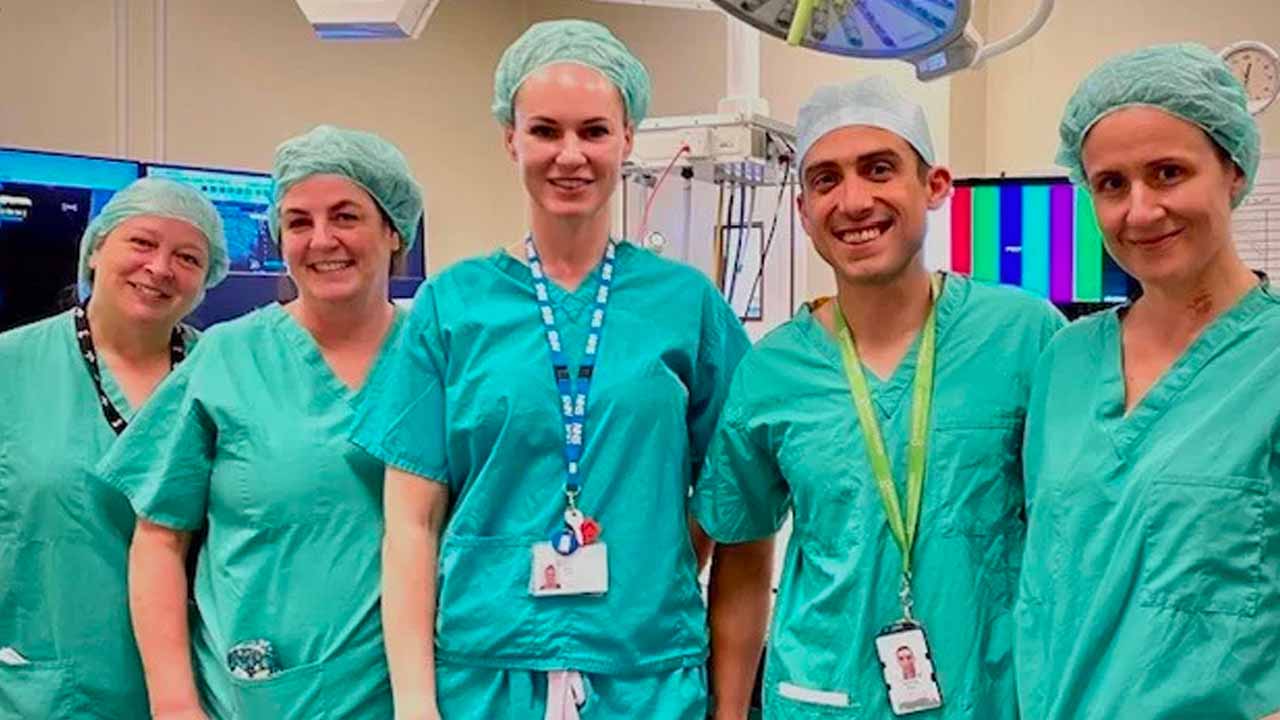What is A Mastectomy?
A mastectomy is surgery to remove the whole breast, which is used to treat breast cancer in both men and women. Breast surgeons often combine mastectomy procedures with simultaneous reconstruction to both remove the breast cancer and then recreate the breast.
Breast cancer treatment is the most common reason people undergo a mastectomy, but there are other reasons. Women with strong family histories or gene mutations, such as BRCA1, BRCA2 or TP53, are considered at very high risk of developing breast cancer. As such, they often choose to undergo a double mastectomy (aka a bilateral mastectomy) to reduce the risk of developing breast cancer in the future.
Occasionally, women who have had a previous mastectomy without reconstruction choose to have a mastectomy to remove their healthy breast, simply for symmetry and to resolve issues they are experiencing with the uneven weight distribution.
Although not always the case, many breast cancer patients can avoid a mastectomy and instead undergo some form of breast conserving surgery (also known as a lumpectomy or partial mastectomy), even with some larger tumours in smaller breasts. This is due to the practice of breast surgery evolving to incorporate plastic surgery techniques in order to remove more tissue and re-shape the remaining breast tissue to give a good cosmetic result.
Types of Mastectomy
As an operation to remove the entire breast, you might think a mastectomy is relatively simple, but there are, in fact, several options. Mastectomy patients have a variety of options and can work with their breast surgeon to find the best one for them. The best type of mastectomy for each patient will depend on their additional cancer treatment needs and personal preferences.
Simple Mastectomy
When most people think of a mastectomy, what they’re imagining is a simple mastectomy. With this procedure, the breast tissue, the nipple area and some surrounding skin are removed with the breast tissue. The remaining skin sits flat on the chest wall with a scar that runs horizontally or diagonally across the chest. This method is used when no simultaneous reconstruction is being performed. Patients often wear a silicone prosthesis in their bra to match the volume of their other breasts, filling out their bra cup and enabling them to look symmetrical when clothed. With the prosthesis in place, it is not possible to tell that they have undergone surgery when clothed. The breast prosthesis is supplied for free by the NHS.
Skin Sparing Mastectomy
A skin sparing mastectomy is the procedure used if breast reconstruction is being performed at the same time as a mastectomy. As the name suggests, in a skin sparing mastectomy, the breast tissue is removed by the healthy breast skin is kept. This skin can then be used to create the new breast shape for the reconstructed breast. If the breast reconstruction will be performed later, then a skin sparing mastectomy is not needed and more skin will be removed.
Skin & Nipple Sparing Mastectomy
A radical matestcomy is similar to a simple mastectomy, but it involves the removal of more skin, and possibly the removal of the pec muscle under the breast tissue. It can also involve removing lymph nodes from the armpit during the same procedure (axilla armpit surgery). This is performed if cancer has affected a large area of the skin or invaded the muscle under the breast. As breast cancer is often diagnosed earlier today, thanks to increased awareness, a radical mastectomy is less common in the UK today.
Radical
Mastectomy
Similar to the simple mastectomy but with removal of more skin and/or removal of the pec muscle under the breast tissue. This is performed if cancer has affected a large area of the skin or invaded into the muscle under the breast. Due to breast awareness it is rarely performed in the UK nowadays due to the fact that patients tend to be diagnosed and treated prior to the cancer reaching this situation.
frequently asked questions
What Are The Alternatives To A Mastectomy?
For some breast cancer patients, a lumpectomy followed by radiation therapy can be an alternative to a full mastectomy. This option will depend on a variety of factors, including the amount of breast cancer cells and where they are located. For early stage breast cancer, breast conserving surgery can be a viable choice, but for locally advanced breast cancer, where the cancer has spread to nearby lymph nodes, a mastectomy might be a better option.
How Long Does It Take To Recover From A Mastectomy?
A mastectomy is an outpatient procedure that usually takes around 90 minutes, depending on whether breast reconstruction is performed at the same time or if both breasts are being removed. Most patients are able to return home following their mastectomy, and recovery usually takes between 4 and 6 weeks.
How Soon Can Breast Reconstruction Surgery Be Done After A Mastectomy?
Breast reconstruction can be done during the same procedure as the mastectomy, which is known as immediate reconstruction. If the patient chooses to wait until after the mastectomy, this is called delayed reconstruction. If chemotherapy or radiation therapy is needed to further treat the cancer after the mastectomy, then this will need to be completed and the patient fully healed before delayed reconstructive surgery can be carried out.
Is Further Treatment Needed After A Mastectomy?
Following a mastectomy, further treatment for breast cancer might be required, depending on the type of cancer the patient has. For those with more aggressive forms of breast cancer, chemotherapy could be required after a mastectomy to completely get rid of the cancer cells. Also, if the patient did not have immediate breast reconstruction surgery, then a separate procedure may take place after the mastectomy.
Get More Information About Mastectomy Surgery
For more information about mastectomy procedures and breast cancer surgery, visit breastcancer.org or the NHS website.
You can also book a consultation to speak to Mr Pieri, an experienced oncoplastic surgeon who can provide bespoke support based on your personal situation.









